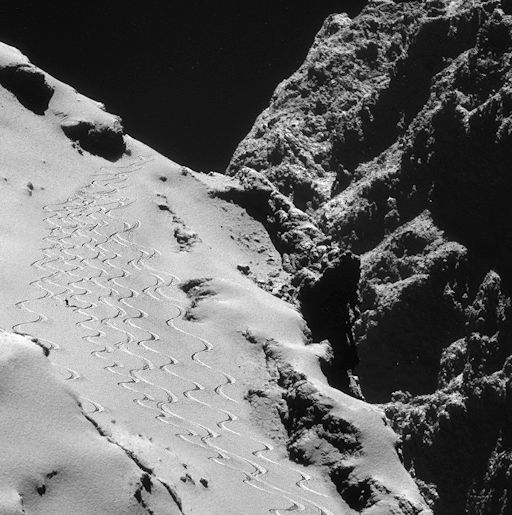Would you like a call when things are happening in the night sky? Sign up for backyard astronomy alerts from spaceweather.com: voice or text. | | | ANOTHER SOLAR FLARE: Active sunspot AR2205 unleashed another strong solar flare today, an impulsive M7-class explosion that peaked around 0947 UT. Radio emissions suggest that a CME raced away from the blast site at 800 km/s (1.8 million mph). Because the sunspot is not facing Earth, the CME should miss our planet. NOAA forecasters estimate a 55% chance of more M-flares in the next 24 hours. MYSTERY OF THE MISSING SPACE WEATHER BALLOON: On Oct. 23rd, during a partial solar eclipse, the students of Earth to Sky Calculus launched a pair of space weather balloons to measure the effect of the eclipse on the temperature structure of the stratosphere. One balloon collected great data. The other is missing. Visit their Facebook page for the full story. MOONLIT AURORAS: Earth is passing through a fast-moving stream of solar wind, and this is stirring auroras around the Arctic Circle bright enough to see through the glare of the nearly-full Moon. Tour guide Gunnar Hildonen sends this picture from Tromso, Norway: 
"Lady Aurora just got crazy in the eastern sky," says Hildonen. "Several of my guests were close to crying. It was pink and violet Rock-n-Roll, and it felt like it should never stop. Yes, I am very glad that I have this job." The moonlight is intensifying ahead of this Thursday's full Moon, but the auroras might be intensifying, too. NOAA forecasters estimate a 40% chance of geomagnetic storms on Nov. 4-5 as the solar wind continues to blow. Realtime Aurora Photo Gallery EUROPE PREPARES TO LAND ON A COMET: On Nov. 12th, the European Space Agency will attempt something "ridiculously difficult"--that is, landing on a comet. The ESA's Rosetta spacecraft will drop a probe named Philae on Comet 67P/Churyumov–Gerasimenko. "The comet will be moving 40 times faster than a speeding bullet, spinning, shooting out gas and welcoming Rosetta on the surface with boulders, cracks, scarps and possibly meters of dust," says Art Chmielewski, the US Rosetta Project Manager at JPL. A video from NASA previews the landing. What would you do if you landed on a comet? For his answer, Spaceweather.com reader Luca Savorani created this graphic: 
"I added some ski tracks to the dusty slopes of the comet's neck," explains Savorani. "The underlying image was taken by Rosetta's NAVCAM on Oct. 28th." Skiing on a comet? The idea's not so crazy. Astronauts have seriously discussed the possibility of skiing on the Moon, where thick layers of moondust resemble the powder that coats parts of 67P. All you need are teflon skis. Realtime Comet Photo Gallery
Realtime Space Weather Photo Gallery
Realtime Eclipse Photo Gallery
Every night, a network of NASA all-sky cameras scans the skies above the United States for meteoritic fireballs. Automated software maintained by NASA's Meteoroid Environment Office calculates their orbits, velocity, penetration depth in Earth's atmosphere and many other characteristics. Daily results are presented here on Spaceweather.com. On Nov. 5, 2014, the network reported 22 fireballs.
(17 sporadics, 5 Northern Taurids)  In this diagram of the inner solar system, all of the fireball orbits intersect at a single point--Earth. The orbits are color-coded by velocity, from slow (red) to fast (blue). [Larger image] [movies] Potentially Hazardous Asteroids ( PHAs) are space rocks larger than approximately 100m that can come closer to Earth than 0.05 AU. None of the known PHAs is on a collision course with our planet, although astronomers are finding new ones all the time. On November 5, 2014 there were potentially hazardous asteroids. Notes: LD means "Lunar Distance." 1 LD = 384,401 km, the distance between Earth and the Moon. 1 LD also equals 0.00256 AU. MAG is the visual magnitude of the asteroid on the date of closest approach. | | The official U.S. government space weather bureau | | | The first place to look for information about sundogs, pillars, rainbows and related phenomena. | | | Researchers call it a "Hubble for the sun." SDO is the most advanced solar observatory ever. | | | 3D views of the sun from NASA's Solar and Terrestrial Relations Observatory | | | Realtime and archival images of the Sun from SOHO. | | | from the NOAA Space Environment Center | | | the underlying science of space weather | | 
